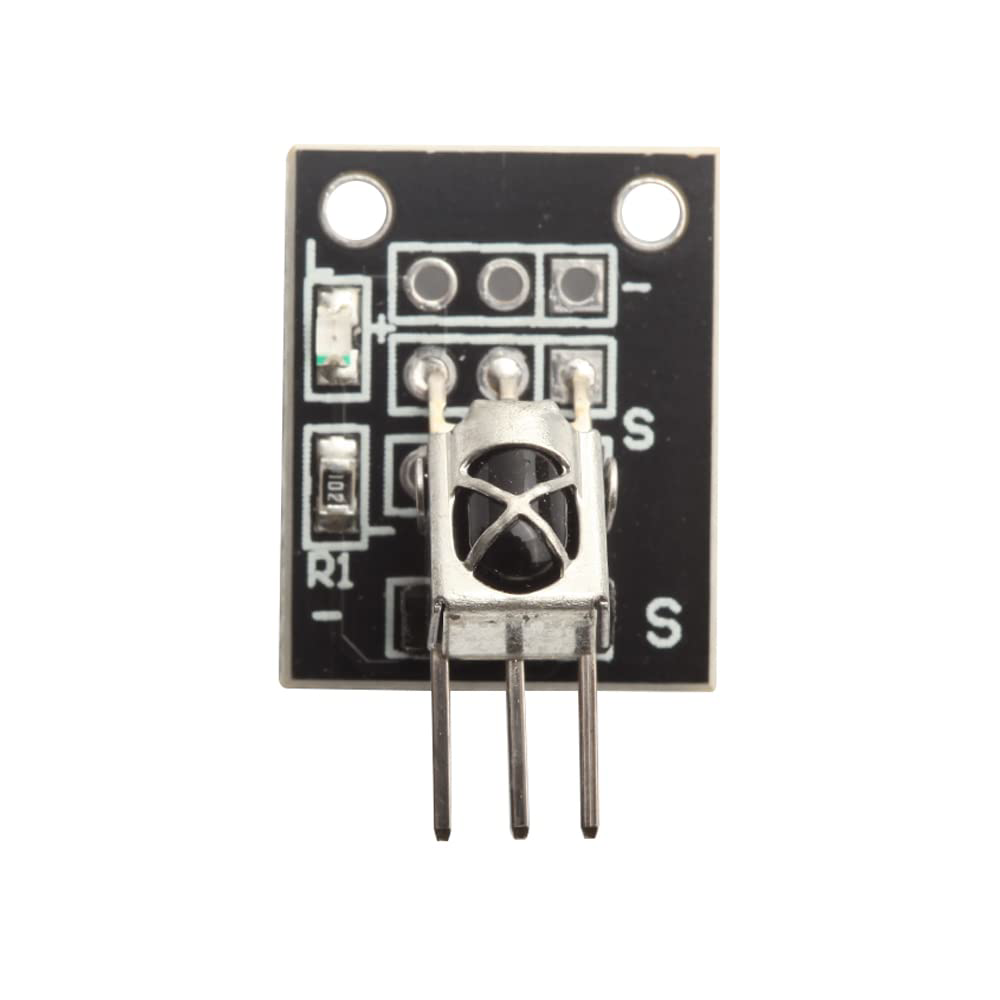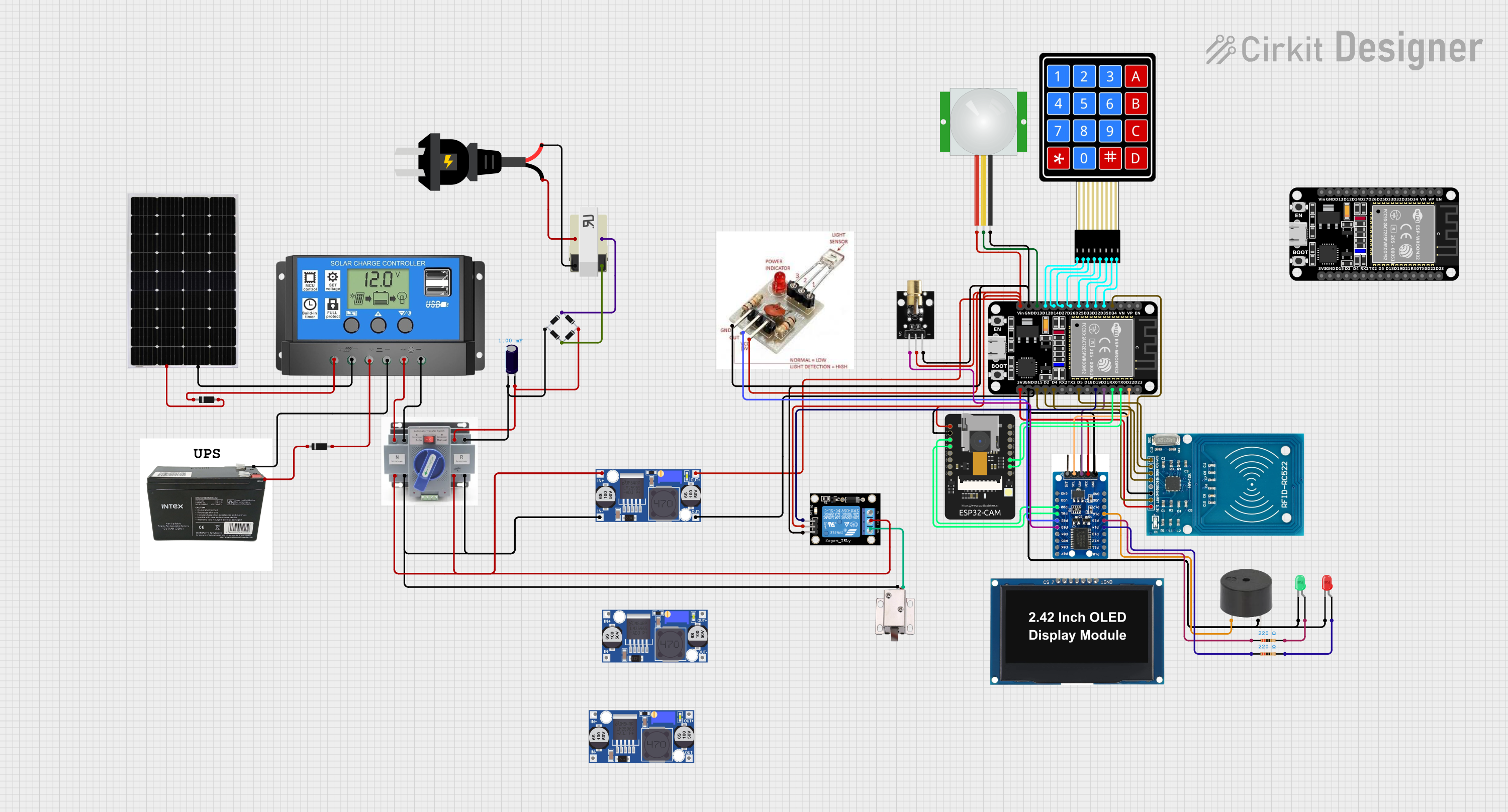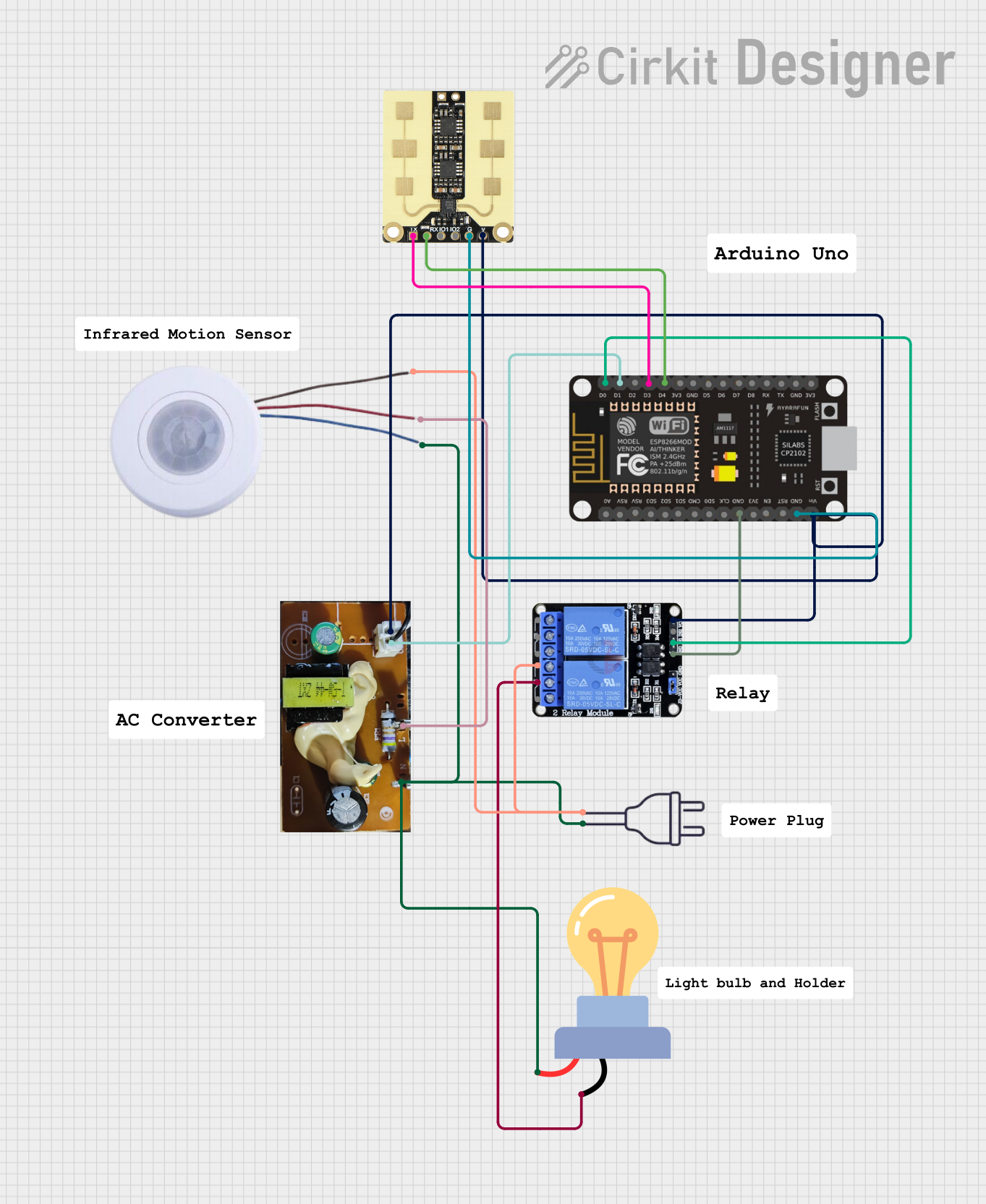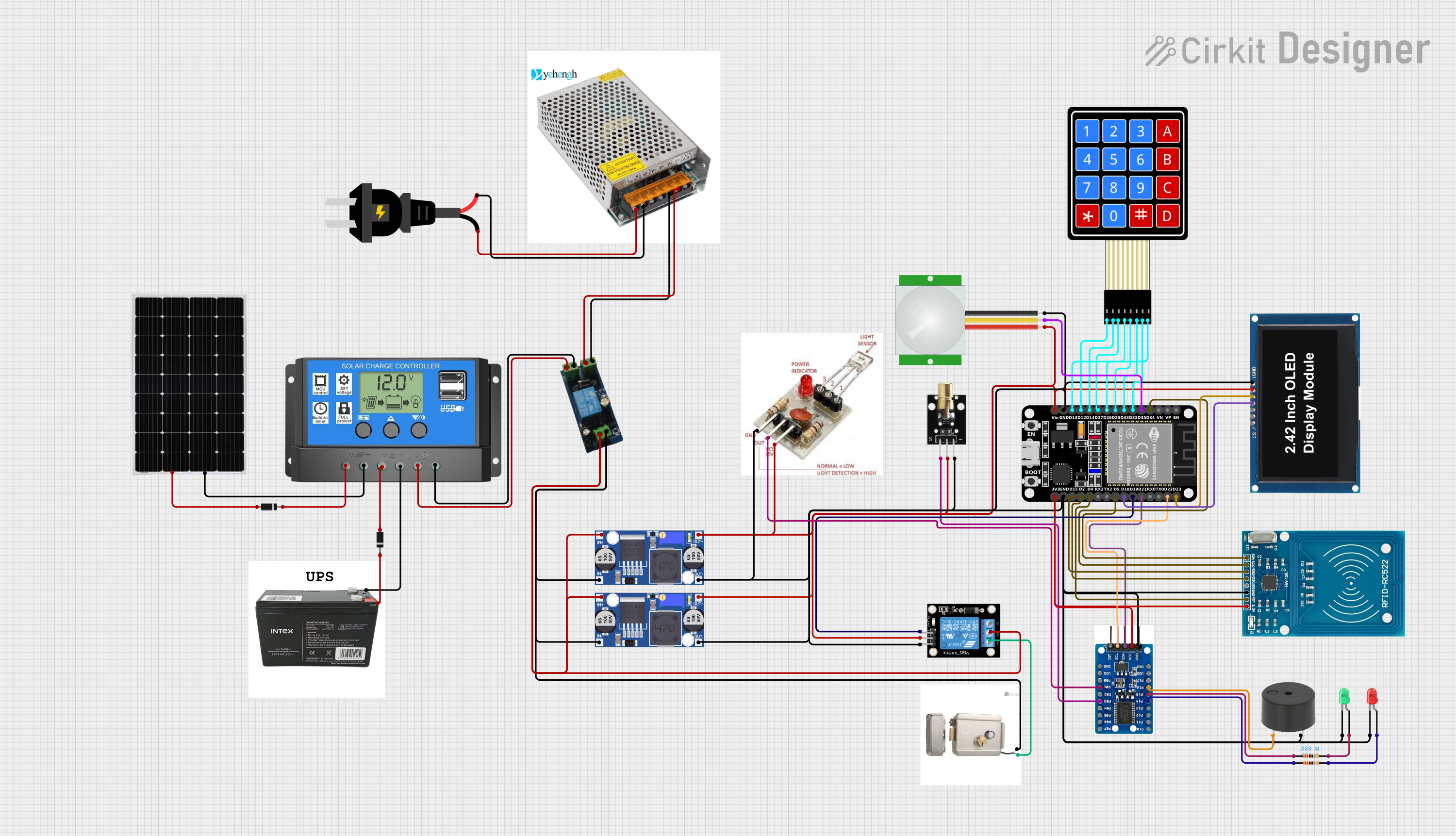
How to Use KY-022 Modulo Led Infrarrojo Receptor: Examples, Pinouts, and Specs

 Design with KY-022 Modulo Led Infrarrojo Receptor in Cirkit Designer
Design with KY-022 Modulo Led Infrarrojo Receptor in Cirkit DesignerIntroduction
The KY-022 is an infrared receiver module designed to detect and process infrared signals, typically from remote controls. Manufactured by Arduino with the part ID nbv, this module is a compact and reliable solution for integrating remote control functionality into electronic projects. It is equipped with a built-in infrared receiver that can decode modulated IR signals, making it ideal for wireless communication.
Explore Projects Built with KY-022 Modulo Led Infrarrojo Receptor

 Open Project in Cirkit Designer
Open Project in Cirkit Designer
 Open Project in Cirkit Designer
Open Project in Cirkit Designer
 Open Project in Cirkit Designer
Open Project in Cirkit Designer
 Open Project in Cirkit Designer
Open Project in Cirkit DesignerExplore Projects Built with KY-022 Modulo Led Infrarrojo Receptor

 Open Project in Cirkit Designer
Open Project in Cirkit Designer
 Open Project in Cirkit Designer
Open Project in Cirkit Designer
 Open Project in Cirkit Designer
Open Project in Cirkit Designer
 Open Project in Cirkit Designer
Open Project in Cirkit DesignerCommon Applications and Use Cases
- Remote control systems for home appliances
- Wireless communication in robotics
- Infrared-based data transmission
- TV, DVD, and other consumer electronics control
- DIY projects requiring remote input functionality
Technical Specifications
The KY-022 module is designed to operate efficiently in a variety of electronic systems. Below are its key technical details:
| Parameter | Value |
|---|---|
| Operating Voltage | 3.3V to 5V |
| Operating Current | 0.4mA to 1.5mA |
| Carrier Frequency | 38kHz |
| Reception Distance | Up to 18 meters (depending on IR source) |
| Reception Angle | ±45° |
| Output Signal | Digital (active low) |
| Dimensions | 18.5mm x 15mm x 10mm |
Pin Configuration and Descriptions
The KY-022 module has three pins, as detailed in the table below:
| Pin | Name | Description |
|---|---|---|
| 1 | Signal | Digital output pin that provides the decoded IR signal (active low). |
| 2 | VCC | Power supply pin. Connect to 3.3V or 5V. |
| 3 | GND | Ground pin. Connect to the ground of the circuit. |
Usage Instructions
The KY-022 module is straightforward to use and can be easily integrated into a variety of circuits. Below are the steps and considerations for using the module:
Connecting the KY-022 to a Circuit
- Power Supply: Connect the
VCCpin to a 3.3V or 5V power source, depending on your system's voltage requirements. - Ground: Connect the
GNDpin to the ground of your circuit. - Signal Output: Connect the
Signalpin to a digital input pin on your microcontroller (e.g., Arduino UNO).
Important Considerations
- Ensure the module is aligned with the IR source for optimal signal reception.
- Avoid exposing the module to direct sunlight or strong ambient light, as this can interfere with IR signal detection.
- Use a pull-up resistor on the signal line if the microcontroller requires it for stable operation.
Example: Using KY-022 with Arduino UNO
Below is an example of how to use the KY-022 module with an Arduino UNO to decode IR signals from a remote control:
#include <IRremote.h> // Include the IRremote library for decoding IR signals
const int RECV_PIN = 2; // Define the pin connected to the KY-022 Signal pin
IRrecv irrecv(RECV_PIN); // Create an IR receiver object
decode_results results; // Create a variable to store decoded results
void setup() {
Serial.begin(9600); // Initialize serial communication for debugging
irrecv.enableIRIn(); // Start the IR receiver
Serial.println("KY-022 IR Receiver is ready to decode signals.");
}
void loop() {
if (irrecv.decode(&results)) { // Check if an IR signal is received
Serial.print("IR Code: ");
Serial.println(results.value, HEX); // Print the received IR code in hexadecimal
irrecv.resume(); // Prepare to receive the next signal
}
}
Notes on the Code
- The
IRremotelibrary must be installed in the Arduino IDE. You can install it via the Library Manager. - The
RECV_PINis set to pin 2 in this example, but you can change it to any digital pin on the Arduino UNO. - The received IR codes will be displayed in the Serial Monitor.
Troubleshooting and FAQs
Common Issues and Solutions
No Signal Detected:
- Ensure the IR source (e.g., remote control) is functional and emitting signals.
- Verify the module's connections, especially the
Signalpin. - Check for interference from ambient light or other IR sources.
Unstable or Incorrect Output:
- Use a pull-up resistor on the
Signalpin if the output is unstable. - Ensure the module is powered with the correct voltage (3.3V or 5V).
- Use a pull-up resistor on the
Short Reception Distance:
- Align the module directly with the IR source.
- Replace the IR source's batteries if they are weak.
FAQs
Q: Can the KY-022 decode all types of IR signals?
A: The KY-022 is designed to decode modulated IR signals, typically at 38kHz. It may not work with non-modulated or non-standard IR signals.
Q: Can I use the KY-022 with a Raspberry Pi?
A: Yes, the KY-022 can be used with a Raspberry Pi. Connect the Signal pin to a GPIO pin and use an appropriate IR decoding library, such as lirc.
Q: What is the maximum range of the KY-022?
A: The module can receive IR signals from up to 18 meters, depending on the strength of the IR source and environmental conditions.
By following this documentation, you can effectively integrate the KY-022 module into your projects and troubleshoot any issues that arise.